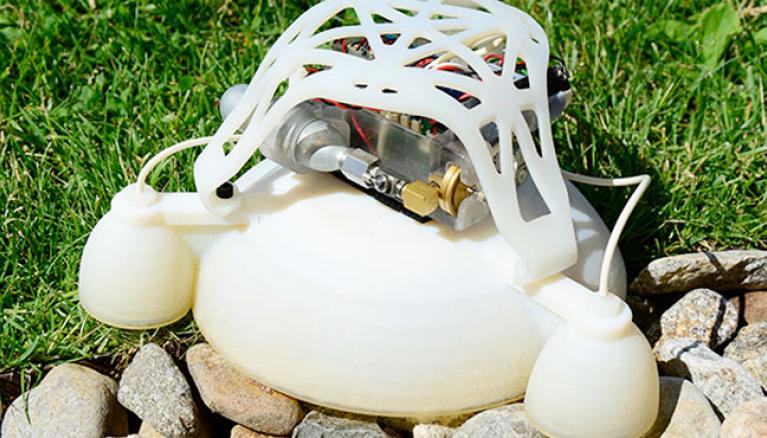3D-Printed Soft Robot Jumps Like Humans
A team at Harvard University’s John A. Paulson School of Engineering and Applied Sciences have come up with a revolutionary design for a robot – a 3D-printable autonomous robot with a body which transitions from soft to rigid. Not only that, but the robot is capable of more than 30 untethered jumps and is powered by a mix of butane and oxygen.
An article titled “A 3D-printed, functionally graded soft robot powered by combustion” describes the bot in the 10 July issue of Science.
The rigid layers on the robot are better for protecting the brain and power source while the soft parts make the machine a lot less vulnerable to any damage when landing from jumps.
If you’re wondering, Tolley and Bartlett got their inspiration from nature, including a species of mussel with a soft foot that hardens when it touches rocks. They said that complexity comes at a very low cost in nature and by using new technologies, such as 3D printing, they are trying to translate this to robotics as well. Shepherd, who was not involved in the new research, says that the new bot “is a really elegant use of 3D printing, and I was very excited to see all the improvements they’ve made through utilizing this interesting [material-gradient] technique”, he says.
Presently, the soft robot demonstrates a method of integrating the rigid components with the soft robot’s body via a gradient of material properties thus eliminating and abrupt transition from hard to soft which often leads to failure.
Together, the two modules form the soft armor that protects the rigid interior which in turn is the protective chamber of the robot’s circuit board and power source. While the hard-bodied robot could jump higher, durability is far more efficient in the long run. But the team from Harvard, led by Nicholas Bartlett, has developed a rubbery 3D printed exterior body for the robot easily capable of absorbing such impact.
This 3D-printed robot could be huge in terms of robotics in the future. If the technology is employed in any sort of military field, the robot using the tech will prove a useful means of navigating through risky or obscure obstacles. This is because every time there will be a change in the design of the robot, they will need a new mold for completing the manufacturing process.
Engineers state that the robot can jump up to six times its own height, while being able to control the direction in which it moves. The ignition of these gases results in the bottom layer of the robot ballooning outwards to provide the necessary propulsion to lift the device off the ground and the variable stiffness of the top layer allows it to land safely.
Engineers have come up with a groundbreaking way of combining hard and soft materials in a robot.
The co-first author of the paper is Michael Tolley of the University of California, San Diego.
Increasingly, researchers are developing robots made from soft, elastic plastic and rubber, inspired by worms and starfish.








